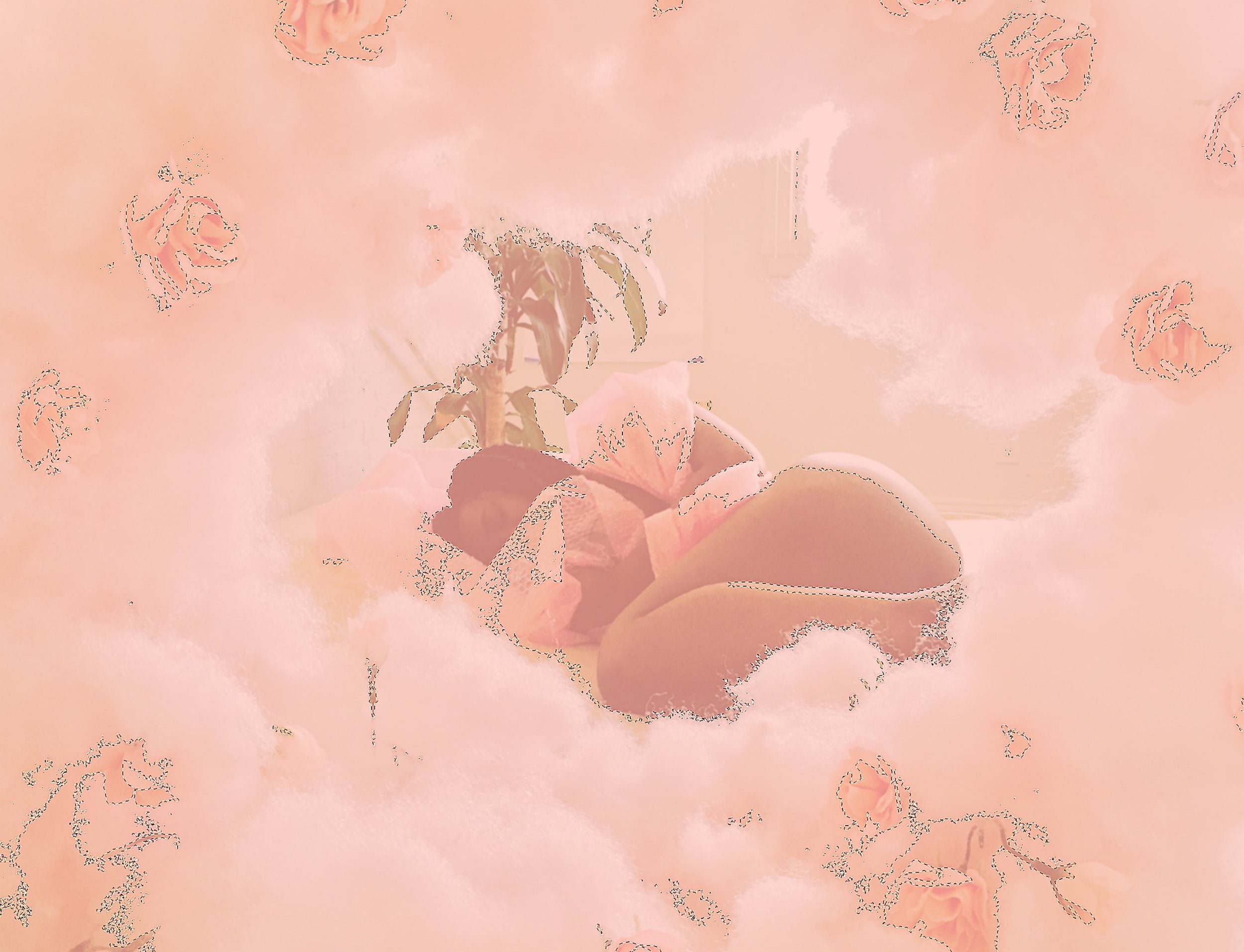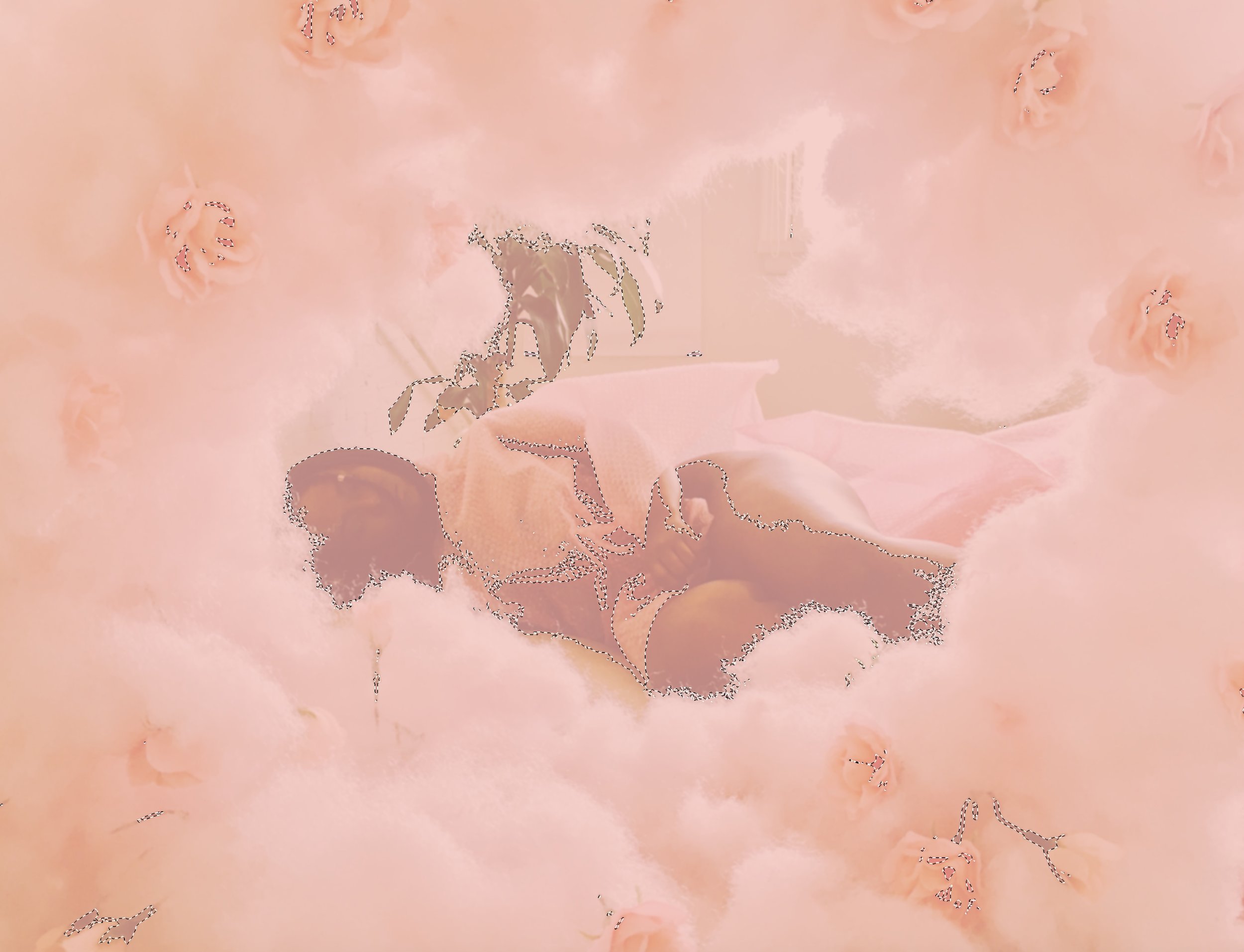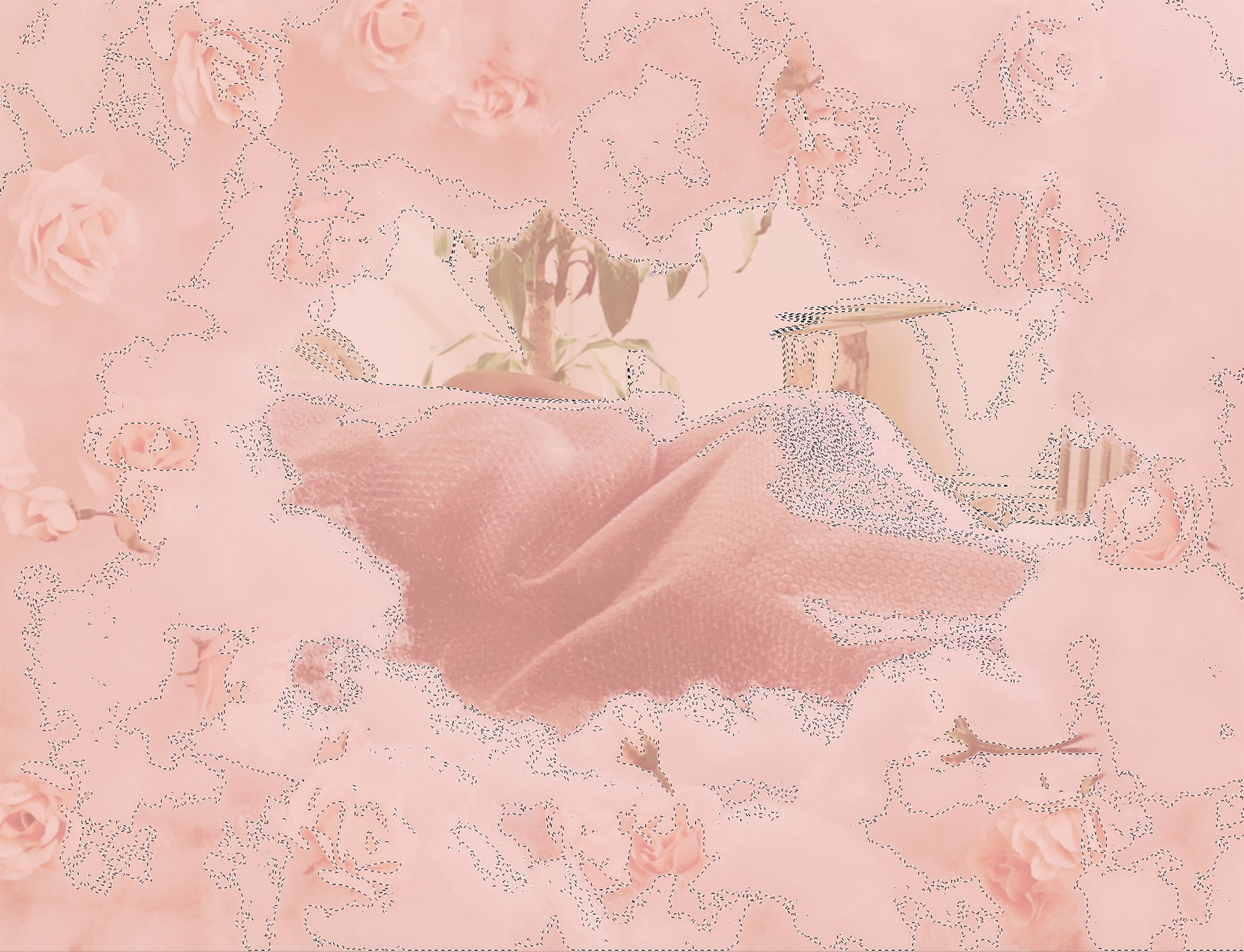Black Girl Sleeping
For the last few years my work has dealt with how I navigate my identity within constructs that facilitate misogynoir. My most recent series focuses on the semiotics surrounding certain colors and my personal urge for black women to be associated with what I view as the girliest color.
My process has dealt a lot with dissecting Alice Walker’s womanism and my relationship with the black feminist movement. In Walker’s definition of a womanist, she gives the analogy: womanist is to feminist as purple is to lavender. The symbolism behind purple is deep, rich, and royal, while its pastel counterpart is more frivolous and girlie, much like the pastel counterpart of the color red. While Walker’s definition does a good job at including various aspects of black womanhood, she also writes that womanists aren’t frivolous but serious. I realize that I could be reading too much into her writing, but does the definition exclude a certain type of black woman? Why aren’t black women allowed the freedom to be ditzy and whimsical?
My personal associations with purple, while positive, just reiterate that black women are strong, responsible and wise. Having depth and wisdom is great.
Purple is great.
But... Is there any room for frivolousness within black womanhood?
Is there any room for pink?
I started this body of work off with writing a love poem to the color pink as a way to generate my ideas in regard to a specific layer of my identity. The poem led me to explore what it means to delve, adorn and revel in pink. It also led me to wonder what the semiotics of the color can add to someone’s identity. When I think of the color pink, the first words that come to mind are words that aren’t normally associated with black women: delicate, rosy, sensitive, and soft. I find that ridiculous. Black women deserve the same rosy veil of softness that our lighter counterparts are protected by. Using video and photography in order to visually articulate that protection, I began incorporating pink bubble wrap along with themes used in my drawing practice. My drawings place black women in the position white women are often seen in art historically. I chose to use art historical references in a more subtle way so that I could place the color pink at the forefront. This series is all about the politics surrounding my black body being shielded with the softness the color pink provides.
The world that we live in often ignores parts of the black experience that don’t fit a stereotypical narrative, denying our individual identities. My goal is to show black women in a light that western society doesn’t let us relish in.





